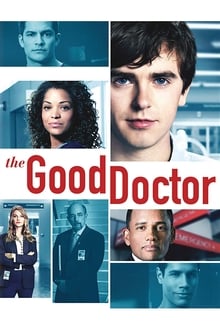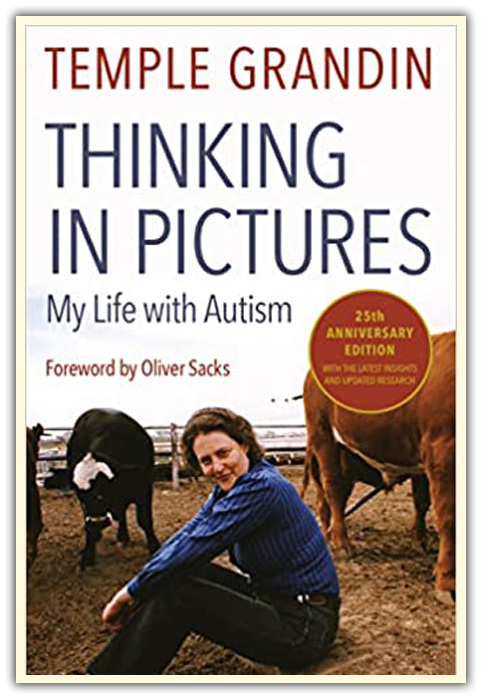neurodiversity
by Andrea ValenteAbstract:
The entry 'neurodiversity' is a recent concept which is getting more popular in the English-speaking countries as consequence of disability movements. The entry aims to define, explain, and critically analyse the new term through examples in popular culture and media such as TV series, films, and autobiographies.
Etymology:
The term neurodiversity is a neologism that combines the prefix 'neuro' with the word 'diversity', similar to the word biodiversity used in environmental studies, according to Judy Singer, who is a sociologist and identify herself as an Asperger. Singer has been credited with coining the term neurodiversity in an article "Why can’t you be normal for once in your life? From a ‘‘problem with no name’’ to the emergence of a new category of difference" (Singer, 1999). The word neurodiversity became popular among individuals with Asperger's and high-functioning autism in the English-speaking countries during the turn of the 21st century. More recently, neurodiversity has been used as a broader term to encompass various neurological conditions such as ADHD (Attention-Deficit Hyperactive Disorder), Learning Disabilities, and bipolar disorder.
Cultural specificity:
Since the proclamation of ‘The Decade of the Brain’ in the early 1990's in North America, and the emergence of a “neuroscientific turn” (Johnson and Littlefield, 2012) during the first decade of 21st century, neuroscience has gained prestigious position not only among the scientific milieu but also among lay communities such as artists, writers, and activists. With this in mind, individuals who self-advocate with neurological conditions such as high functioning autism, Asperger's, and ADHD have joined neurodiversity movements in order to raise people's awareness of their conditions as part of their advocating disability rights and inclusive education.
Problematization:
The use of the term neurodiversity has become commonplace in educational policies across elementary and secondary schools as well as universities in North America in order to comply with the Diversity, Equity, Inclusion (DEI) movements. In the university setting, the use of the term has also become part of the everyday language among university staff and students as wellness centres and mental health services start popping up on-campus. Contrary to terms such as 'neuro-disabilities', 'learning disabilities', and 'special needs', the term neurodiversity holds positive tone and rhetorical forces that evoke differences in how people's brains develop and function, distancing itself from medicalization. In this manner, students can have more autonomy since they are not bound by official diagnoses from doctors. Students themselves can identify as being neurodivergent if they struggle with their learning or mental health. Although this autonomy can enable students to exercise some level of agency, it may not guarantee them legal rights that local disability laws can confer.
A similar situation can also be witnessed in the workplace, however, with more bureaucracy. Whereas in the university settings, neurodiverse students may receive accommodations based on self-advocacy, in the workplace neurodiverse employees are required to provide medical notes along with a plethora of physical exams to be legally served, as seen in the case of Ontario, Canada. (https://www.ohrc.on.ca/en/policy-ableism-and-discrimination-based-disability/8-duty-accommodate
Besides the heavy requested documentation, another common problem a neurodivergent person may deal with is the condition (constraint? requisite?) to reveal his or her neurological conditions to the employer and workmates in order to receive some legal disability support or accommodations at work, which becomes a reminder of being considered not 'normal'. By doing so, these individuals may have to deal with otherness and or othering.
Communication strategies:
As mentioned, neurodiversity is usually a term used to encompass individuals with autism, ADHD, and dyslexia among other neurodevelopmental conditions. Mainstream American popular culture has helped raise awareness to certain conditions mainly in reference to autism spectrum disorder. Fictional characters with autism spectrum disorder have been widely represented on the screen since the Oscar-awarded film Rain Man (1988), reaching its peak at the turn of the 21st century.

Such popularity in portraying characters on the spectrum in the production of American films may be attributed to society’s anxiety in dealing with an “autism epidemic” which has been frequently reported by mainstream media (Eyal et al. 2010). Despite some scholars and activists have pointed out misrepresentations or stereotypes of characters with autism on the screen (Draaisma 2009; Conn and Bhugra 2012; Nordhal-Hansen 2018), those films can raise viewers’ awareness of how society responds to individuals with the disorder.

Not only neurodiversity has been represented in films but also in TV series indirectly and directly, becoming widely popular locally and globally, by reaching out millions of viewers, such as the sitcom Big Bang Theory (2007-2012) and the TV drama The Good Doctor (2017-present). By communicating and representing ASD through humor and drama, The Big Bang Theory and The Good Doctor depict their protagonists with autism spectrum disorder as 'genius' or 'savant'.
However, the communication and performance are gender biased as most autistic protagonists are males relaying to the mass audience that the condition usually affects males mostly, which is not the case. Autism affects both male and female; however, the former manifests the neurological condition differently because of the cultural and social roles that are attributed to woman. For example, the fact of acting as a 'quiet', 'studious', or 'reserved' girl, which are usually socially 'expected' to be a 'female behaviour', as seen in history and traditional societies, can masquerade some of the autistic symptoms such as acting aloof.
Subversion:
While media representation has helped society to become aware of neurodiversity through main characters living their everyday life, the approach still remains top-down, from the perspective of filmmakers or producers. For example, the current, popular TV series drama, The Good Doctor portrays its protagonist, Shaun Murphy, as a young male intern surgeon in a big hospital, who has autism spectrum disorder and is savant. It is the feature of being 'genius' that can secure him a place in the workspace and not of being an autist.

Although living with neurodiverse conditions, Dr. Murphy holds a privileged position in terms of social class and gender roles. Such position is not a reality for most neurodivergent individuals, who usually struggle to succeed in the school and work environments.
Yet, a bottom-up perspective such as life stories told by non-fictional neurodivergent individuals can offer a more authentic portray of a person living with autism. The trend to write autobiographies by 'everyday' people started in the early 1990's. The most well-known autobiography since then is by an autistic woman called Temple Grandin, who is an animal engineer. Despite Grandin's status as a renowned scientist holding certain socio-economic benefits, she is an autist on the high-functioning end, having lived through real life struggles, particularly during her school years. In her autobiography, first published in 1995, Thinking in Pictures: My Life with Autism, Grandin talks about how difficult it was for her to adapt to the school setting and culture, and to interact with her teachers and peers as socially expected.

With similar challenges in school, Francesca Martinez an activist and stand-up comedian with cerebral palsy, narrates her life stories in her book What's the F* is Normal? She also mentions her difficulties to 'fit-in' at school, where teaching and learning has been designed to a 'one size fits all' approach. Both women struggle to adapt, which shows how unprepared society is to recognize and provide spaces for individuals with neurodiverse conditions.

More neurodivergent people are now able to share their life stories outside of the clinical environment or the doctor's office thanks to the neurodiversity movement. Women with bipolar disorder, epilepsy, cerebral palsy, and learning disabilities, among others, have stood up and revealed their conditions in the public domain through published autobiographies in order to raise society's awareness and to educate people about their neurological conditions. Thus, such life writing style and genre has been coined as neuro-autobiography by the author of this entry (Valente, 2020). The neuro-autobiography is an attempt to subvert the medical discourse by deconstructing the 'abled-body' while educating the audience about the writer's neurological conditions.
Discussion:
Given that the term "neurodiversity" has been used to refer to diversity, inclusion, and equality, it has occasionally been misused to support particular political goals. This might not wind up being in the neurodivergent person's best interests. In this way, it can also be used to generalise or lessen some neurological conditions that might be harmful to a person's needs. This can lead us to raise the following questions:
- How can the term neurodiversity provide genuine inclusion in the school or work environment?
- If a person self-identifies as a neurodivergent at work, what are the advantages and disadvantages of making it publicly?
- How can the neurodiversity movement benefit an individual with a neurological condition in his or her daily life?
- How can a mutual dialogue between neurotypicals (i.e. non-neurodivergent people) and neurodiverse population in schools and workplaces be promoted?
- Should the word 'neurodiverse' be also integrated into the medical discourse? If so, what would be the implications?
References/Further Readings:
Draaisma, Douwe. “Stereotypes of Autism.” Philosophical Transactions of the Royal Society of London. Series B, Biological Sciences, vol. 364, no. 1522, May 2009, pp. 1475-80. doi:10.1098/rstb.2008.0324.
Eyal, Gil et al. The Autism Matrix. Polity, 2010.
Grandin, Temple. Thinking in Pictures: And Other Reports from My Life with Autism. Vintage Books, 2006.
Johnson, Jenell, and Melissa M. Littlefield. The Neuroscientific Turn: Transdisciplinarity in the Age of the Brain. University of Michigan Press, 2012.
Nordahl-Hansen, Anders, et al. “Mental Health on Screen: A DSM-5 Dissection of Portrayals of Autism Spectrum Disorders in Film and TV.” Psychiatry Research, vol. 262, Apr. 2018, pp. 351-53. doi:10.1016/j.psychres.2017.08.050.
Singer, Judy. "Why can’t you be normal for once in your life? From a problem with no name to the emergence of a new category of difference." Disability discourse (1999): 59-70.
Valente, Andrea C. The Vernacularisation of Modern Neurosciences: A Case Study of Neuro-Autobiographies in the Age of Complexity. Unpublished Doctoral Dissertation, Graduate Program in Humanities. York University, 2020.
How to cite this entry:
Valente, A. (2023). Neurodiversity. In Other Words. A Contextualized Dictionary to Problematize Otherness. Published: 10 November 2023. [https://www.iowdictionary.org/word/neurodiversity, accessed: 31 March 2025]
